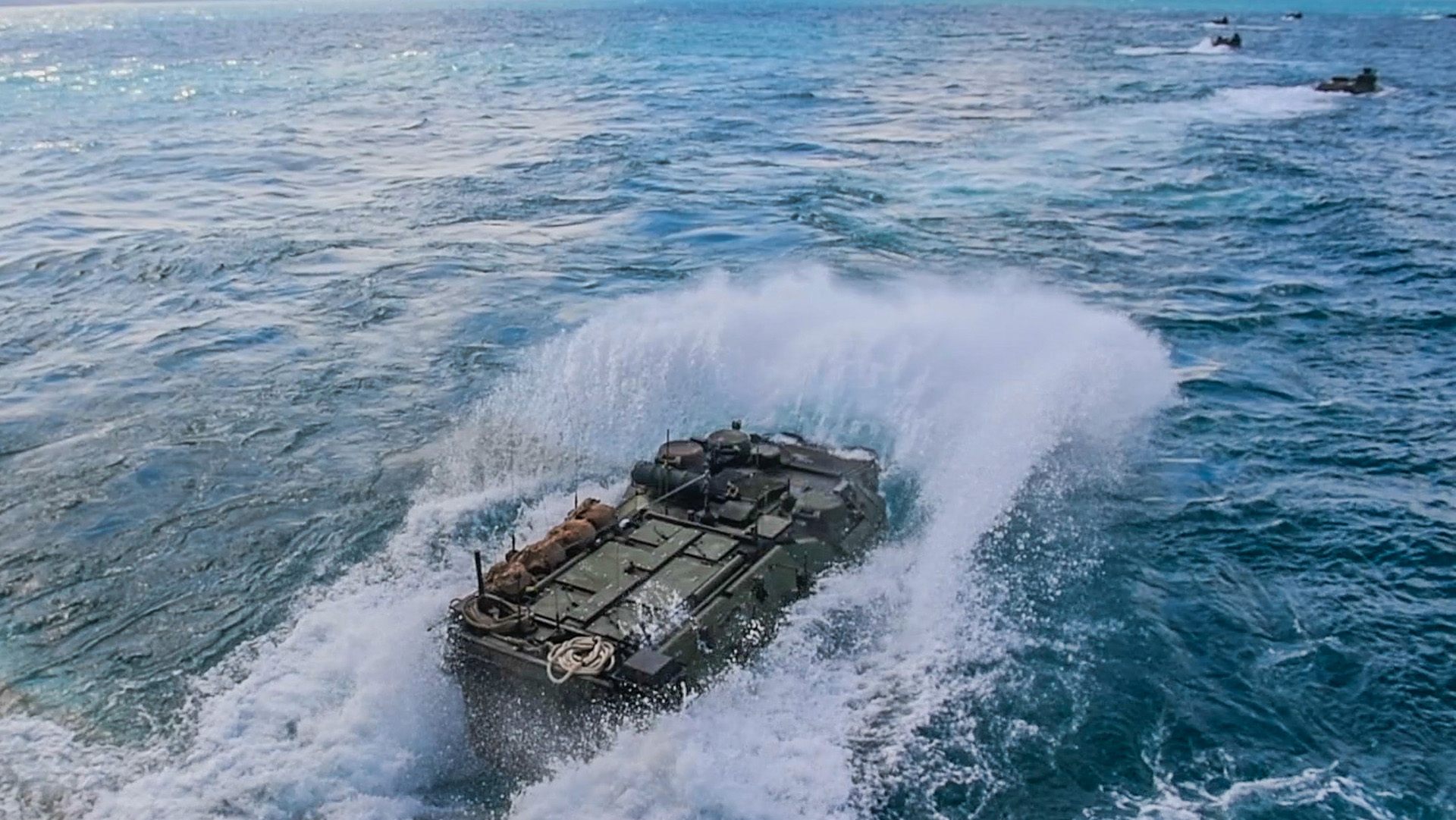

The Marine Corps wants to be done with its assault amphibious vehicles, but that doesn’t mean they are going to go to rust. More than a year after the Marines barred the use of the vehicles in deployments and training following a deadly incident, the United States is set to sell dozens to Greece.
The State Department confirmed that it had approved the sale, valued at $268 million. The sale calls for Greece purchasing 63 regular AAVs as well as several of the AAVs’ variants. Those include four AAVs, Recovery Variant and nine Command Variant vehicles. Those are being purchased as part of a wider arms sale to the European nation. The weapons deal also calls for, among other pieces, 63 machine guns, plus MK-19 grenade launchers, thermal sights and various technical support and training.
Subscribe to Task & Purpose Today. Get the latest military news, entertainment, and gear in your inbox daily.
“This proposed sale will support the foreign policy and national security objectives of the United States by helping to improve the security of a NATO ally, which is an important partner for political stability and economic progress in Europe,” the State Department said in its determination. “This proposed sale will improve Greece’s capability to meet current and future threats by providing an effective capability to protect maritime interests and infrastructure in support of its strategic location on NATO’s southern flank. Greece contributes to NATO operations, as well as to counterterrorism and counter-piracy maritime efforts. Greece will have no difficulty absorbing these articles and services into its armed forces.”
The positive assessment of the AAV’s benefits comes despite the Marine Corps’ own dislike of the vehicles after nine service members died in one on July 30, 2020. While training off the coast of San Clemente Island in Southern California, one assault amphibious vessel sank, killing eight Marines and one Navy corpsman. A subsequent investigation found that the already old fleet of AAVs were failing inspection and were poorly maintained, with repairs falling behind, crews cannibalizing vehicles for parts and serious issues with bilge pumps on the vehicles, turning them into “death traps,” as one Marine veteran called them.
At the time, the Marine Corps said they would only be used again in water “if needed for crisis response,” but the overwhelming majority of the AAV’s use was on land.
The sale to Greece is still pending Congressional approval.
The Marine Corps was already working to phase out the decades-old AAVs and replace them with the new amphibious combat vehicles when the incident in Southern California happened. The ACVs use wheels instead of tracks like the older AAVs. 1st Marine Division has been testing the newer vehicles in Southern California. There have been multiple mishaps involving them in 2022, including incidents in July where high waves disabling one vehicle while another flipped onto its side, causing minor injuries. Another ACV rolled onto its side while testing in surf areas due to a malfunction in October.
Greece isn’t the only nation to use secondhand AAVs. In 2019, the U.S. also approved the sale of 11 AAVs to Spain, to supplement its own existing fleet of the vehicles. Other nations that use the assault amphibious vehicle include Japan, South Korea and the Philippines, among others.
The latest on Task & Purpose
- A major US Army formation just dropped new restrictions on tank names
- How Russia uses US military veterans in its propaganda war against Ukraine
- Jon Bernthal is back as The Punisher in ‘Daredevil: Born Again’
- The Russian military is so low on ammo that troops are reduced to fighting with e-tools
- How the World War I Maxim machine gun became a weapon of choice in Ukraine
Want to write for Task & Purpose? Click here.